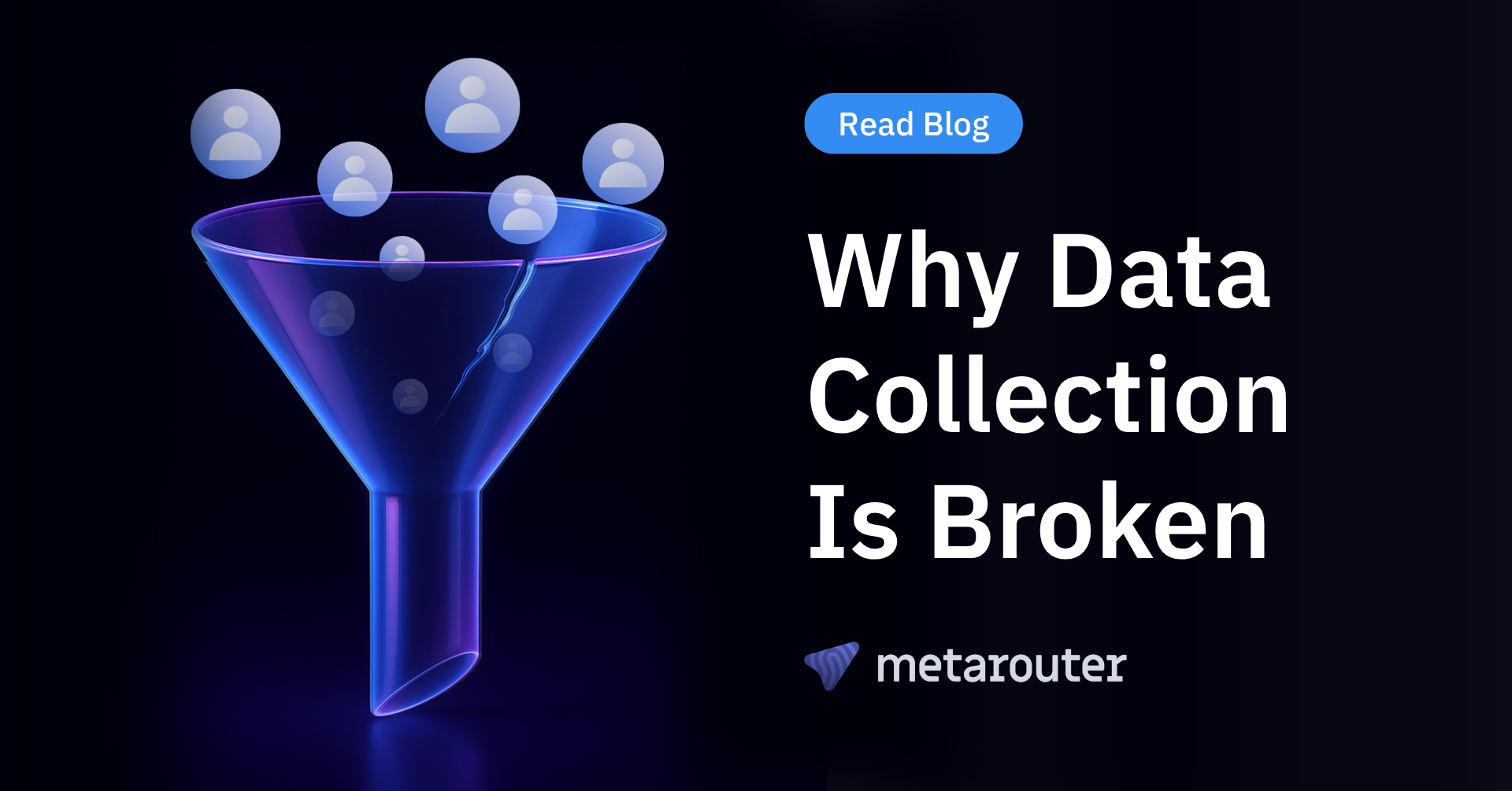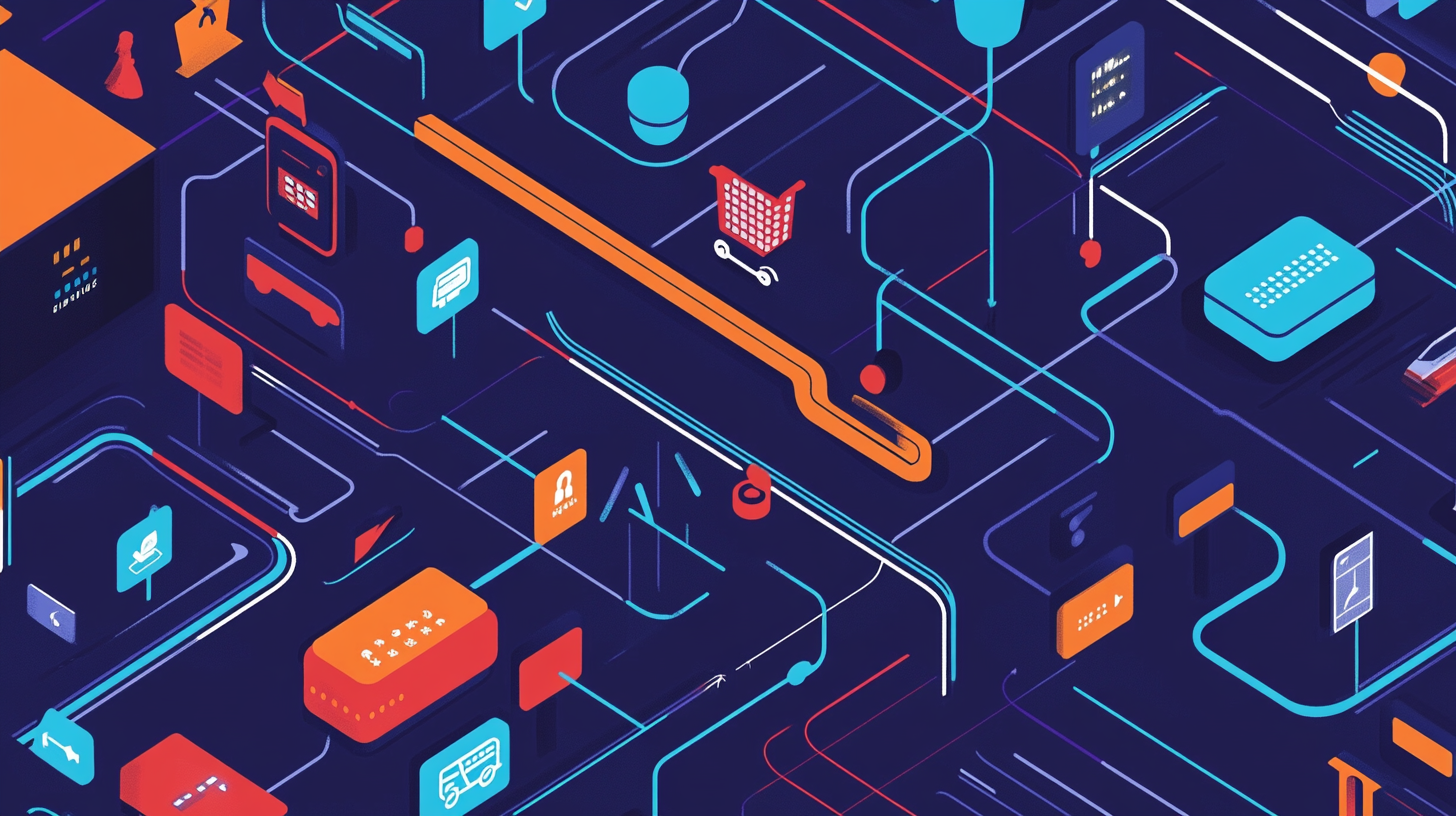Why Data Collection Is Broken
Data collection might be broken right now, but I'm excited to show you how we can fix it. Let's dig in.

Companies are getting creative with how they tackle data challenges in today's business world. Nowhere is this more evident than in retail media networks, which are growing so fast they're expected to exceed TV revenue by 2028.
At the heart of every successful retail media network is a well-oiled system of data collection, distribution, and ad delivery. Brands need to share valuable loyalty data with publishers (while staying on the right side of regulations), plus provide publishers with first-party data showing how ads are performing.
The good news? Despite these hurdles, there's a win-win-win scenario waiting: retailers can monetize their unused first-party data, brands can connect with shoppers who are ready to buy, and consumers get shopping experiences tailored just for them.
Data collection might be broken right now, but I'm excited to show you how we can fix it. Let's dig in.
The Data Backbone That Makes It All Work

Let's talk about what powers modern data collection: a complex web of technologies. Your tech stack probably includes a CDP, DSP, ad server, data warehouse, analytics tools, and more. For retail media networks, first-party data has become the gold standard, especially now that advertisers can't rely on third-party cookies anymore.
The big challenge? Getting all these systems to play nicely together while keeping data flowing smoothly, securely, and within the rules. This is particularly tricky when you're trying to connect what happens in-store, on your site, and across the wider web.
Essential Retail Media Tech Stack
For a sense of the challenge facing brands today, consider the typical retail media tech stack.
1. Audience Data Layer: Collect and unify first-party customer data for audience segmentation and targeting
- Customer Data Platforms (CDPs)
- Loyalty Programs
- CRM Systems
2. Identity Resolution: Match users across channels/devices while maintaining privacy
- Identity Graphs
- Clean Rooms (e.g., LiveRamp, InfoSum)
3. Ad Serving: Deliver personalized and context-aware ads across digital properties
- Retail Ad Servers (e.g., CitrusAd, Criteo Retail Media, PromoteIQ)
4. Demand Side Platforms: Programmatic buying of ad inventory based on audience and performance data
- The Trade Desk
- Amazon DSP
- Criteo DSP
5. Product & Inventory Feeds: Enable real-time syncing of product data (price, availability) for ad creatives
- Product Information Management Systems
- Dynamic Content Platforms
6. Attribution & Analytics: Track ad impact across online and offline sales channels
- Multi-Touch Attribution Tools
- Conversion APIs
- POS Integration
7. Insights & Reporting: Provide advertisers and internal teams with transparent campaign performance metrics
- BI Tools (Looker, Tableau)
- Custom Dashboards
- SKU-level analytics
8. Privacy & Compliance: Ensure compliance with CCPA/GDPR and manage user permissions
- Consent Management Platforms
- Data Governance Tools
9. Onsite & In-App Personalization: Optimize the shopper experience and boost conversion rates
- A/B Testing Engines
- Recommendation Engines
- Personalization APIs
10. Retail Media Operations: Streamline campaign setup, approvals, and asset management
- Campaign Management UIs
- Workflow Automation Tools
Why Today's Data Collection Just Doesn't Cut It

All those amazing analytics tools? They've created a fragmentation nightmare. Data gets trapped in silos across multiple systems. Just maintaining a single source of truth and keeping data flowing between systems is practically a full-time job.
Client-side implementations come with their own headaches too – latency issues, bot traffic, and ad blockers that mess with your data more than they help.
Let's use retail media networks as our example. Check out all the different data collection technologies they use and the challenges that come with them:
Data Collection Technologies in Retail Media Networks
Digital Tracking
Technology: Web & App Analytics Pixel Tags & Cookies
Use Case: Monitor user behavior on websites and apps Track ad impressions and interactions
Collection Challenge: Incomplete user journeys across platforms Cookie deprecation impacts tracking Privacy regulations limit effectiveness
In-Store Analytics
Technology: IoT Sensors (smart shelves, RFID) Video Analytics (CCTV with AI) Mobile Location Analytics
Use Case: Monitor product interactions and inventory Analyze foot traffic and behavior Track customer movement patterns
Collection Challenge: High implementation cost Data integration complexities Privacy concerns Requires significant infrastructure
Transactional Data
Technology: Point-of-Sale Systems Loyalty Programs
Use Case: Capture sales data and purchase history Collect customer preferences
Collection Challenge: Data siloing Real-time data access limitations Limited to enrolled customers
Data Integration Platforms
Technology: Customer Data Platforms Data Clean Rooms
Use Case: Unify customer data from various sources Enable secure data collaboration
Collection Challenge: Data standardization challenges Technical complexity Robust privacy compliance needs
Ad Tech & Measurement
Technology: Demand-Side Platforms Marketing Attribution Tools
Use Case: Manage programmatic advertising Determine marketing effectiveness
Collection Challenge: Attribution challenges Online/offline data integration Multi-touch attribution complexity
The Real Price of Broken Data Infrastructure
It's hard to overstate how valuable data is for modern brands. Retail media networks that can leverage first-party loyalty data to enhance advertising and connect publishers with their target audiences are sitting on a goldmine. Industry analysts predict the retail media network space will grow to a whopping $100 billion in annual revenue. This creates both pressure and opportunity to build better data infrastructure.
When you're operating at this scale, match rates and identity resolution aren't just technical details – they're make-or-break factors. They sharpen your targeting and create value for everyone in the ecosystem: consumers, publishers, and the networks themselves. And we haven't even talked about the operational headaches and engineering hours wasted on maintaining fractured solutions.
For today's brands, the key challenge is establishing that elusive single source of truth and creating functional data pipelines so all systems work from the same playbook with consistent data.
Building a Better Foundation: Server-Side Architecture
Server-side architecture gives us a fresh approach to upgrade data systems and future-proof your infrastructure. While client-side data collection has been the go-to method for years, it's showing its limits as brands handle more data and connect with more solutions.
The server-side approach creates that elusive single source of truth that can efficiently distribute information to multiple endpoints, keeping your data clean and consistent. It also dramatically improves the user experience by eliminating third-party tags and boosting site performance. This means shoppers interact more smoothly with your ecommerce platform and complete more purchases. And the research backs this up – even small performance improvements can significantly impact your bottom line.
Server-side technologies provide the technical building blocks for true first-party data. They can sync with both online and offline sources to build a complete picture of your customer. Data collected in physical stores becomes relevant to offers in your app or on retail media networks. This kind of seamless personalization is exactly what makes retail media networks so attractive to brands.
Advanced Identity Resolution: Connecting the Dots

One of the biggest opportunities in data collection is connecting unknown visitors to known customers. Identity resolution gives you a privacy-friendly way to match identifiers across sessions and channels. For retail media networks, this means tracking and combining user interactions across web, mobile, in-store, and other touchpoints.
This holistic approach creates rich customer profiles that power personalized advertising and help retail media networks connect publishers with customers ready to buy. And here's a bonus: the extended persistence of server-side infrastructure means your first-party cookies aren't affected by ITP and ETP browser restrictions. Your cookies can last beyond twelve months, keeping those valuable customer journeys trackable and actionable over the long term.
Moving your tag management systems server-side puts you back in control of identity, data quality, and consent enforcement. You'll also see a major boost in match rates – another big win from server-side implementation.
Built-In Compliance: Privacy You Can Count On
One of the biggest headaches in modern data collection? Staying on the right side of privacy and security regulations. That's why built-in compliance measures for consent management are critical at the collection point. This prevents data from going to the wrong systems or customer information being shared inappropriately.
Privacy laws like GDPR, CCPA, CPA, and CPRA are constantly evolving, limiting how brands collect, store, and use customer data. These laws take a hard stance on cross-domain tracking and third-party cookies, making many traditional client-side tracking methods obsolete. A server-side approach helps you stay compliant without sacrificing functionality or user experience.
Direct integration with a consent management platform at the data collection point guarantees that consent signals are captured and respected in real-time. This means unauthorized data never reaches downstream tools, keeping your customers' information safe and secure.
A zero-trust framework reduces the attack surface and protects PII during transmission and storage. No third-party vendor gets access to raw data unless explicitly allowed by consent settings. This security-by-design approach enables compliant data activation across clean rooms, CDPs, and analytics platforms.
For retail media networks, getting this right is non-negotiable, since using customer data in advertising must be privacy-compliant to avoid legal trouble.
Future-Proofing Your Data Stack

We're living in an age where data can be used in powerful, innovative ways. In today's AI-driven world, having AI-ready data structures unlocks advanced targeting and personalization that can give your retail media network and brand a serious competitive edge.
When you establish a single source of truth that's compliant and connects with all your systems, you guarantee that any integration or third party you use has access to the right data to perform at its best. The key is building data infrastructure that can grow and adapt. As demand increases, your data collection system needs to stay rock-solid and handle expanding scale.
MetaRouter is server-side customer data infrastructure that creates a pipeline between all your data services to help you build that single source of truth. Want to learn more? Check out MetaRouter today.